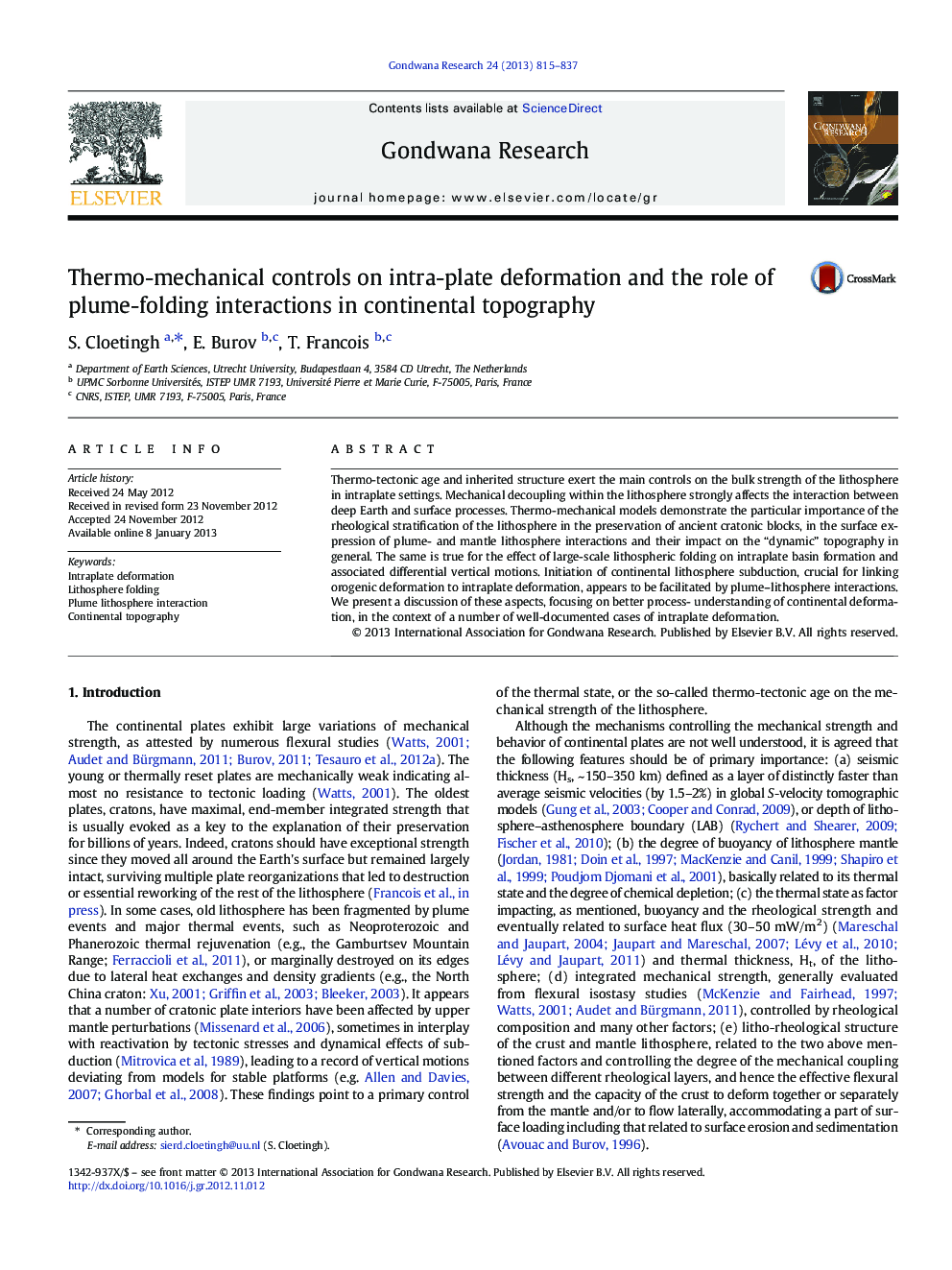| کد مقاله | کد نشریه | سال انتشار | مقاله انگلیسی | نسخه تمام متن |
|---|---|---|---|---|
| 4726904 | 1640143 | 2013 | 23 صفحه PDF | دانلود رایگان |
Thermo-tectonic age and inherited structure exert the main controls on the bulk strength of the lithosphere in intraplate settings. Mechanical decoupling within the lithosphere strongly affects the interaction between deep Earth and surface processes. Thermo-mechanical models demonstrate the particular importance of the rheological stratification of the lithosphere in the preservation of ancient cratonic blocks, in the surface expression of plume- and mantle lithosphere interactions and their impact on the “dynamic” topography in general. The same is true for the effect of large-scale lithospheric folding on intraplate basin formation and associated differential vertical motions. Initiation of continental lithosphere subduction, crucial for linking orogenic deformation to intraplate deformation, appears to be facilitated by plume–lithosphere interactions. We present a discussion of these aspects, focusing on better process- understanding of continental deformation, in the context of a number of well-documented cases of intraplate deformation.
Figure optionsDownload as PowerPoint slideHighlights
► Preservation of cratons is conditioned by strong mantle lithosphere.
► Initiation of continental subduction can be promoted by plume activity.
► Plume–lithosphere interactions can enhance folding and vice versa.
Journal: Gondwana Research - Volume 24, Issues 3–4, November 2013, Pages 815–837
